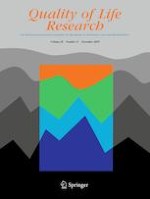15-07-2019
Disabled life expectancy with and without stroke: a 10-year Japanese prospective cohort study
Gepubliceerd in: Quality of Life Research | Uitgave 11/2019
Log in om toegang te krijgenAbstract
Purpose
A stroke is a debilitating condition that can cause lifelong disability, severely limiting the ability of individuals to perform daily activities. In Japan, strokes are the fourth leading cause of death; however, no previous studies have examined the influence of strokes on a disabled or disability-free life for older Japanese residents. This study aims to address this gap.
Methods
The study used data from the Nihon University Japanese Longitudinal Study of Aging (NUJLSOA) and incidence-based multistate life tables to estimate disabled and disability-free life expectancy based on the stroke status of Japanese residents aged 65 and older.
Results
Japanese stroke survivors aged 65 who experienced an initial disability-free state could expect to live approximately 3 fewer total years of life, 4–5 fewer years in a disability-free state, and 1–2 more years in a disabled state compared to those without history of a stroke (p < 0.05). For those disabled at the beginning of the survey interval, the differences between individuals with and without stroke history were also similar to those disability-free at the beginning of the survey interval (2–4 and 5–6 fewer total and disability-free years, respectively) (p < 0.05). The same pattern was observed for older age groups.
Conclusion
Older adults who have experienced a stroke could experience a shorter total life expectancy, shorter disability-free life expectancy, and longer disabled life expectancy than those who have not experienced a stroke. These results can inform policymakers and rehabilitation practitioners on stroke survivor long-term care needs and their post-stroke health status.
